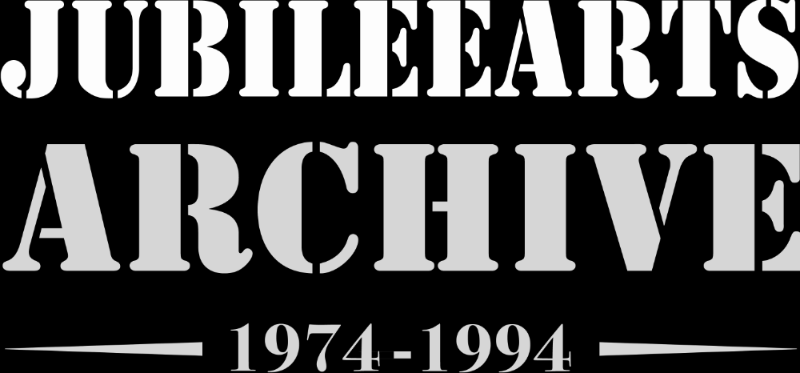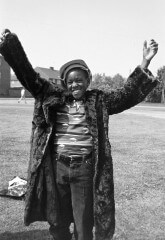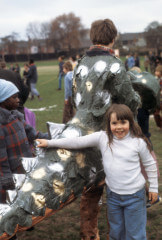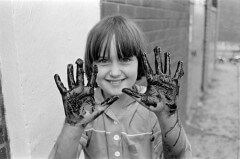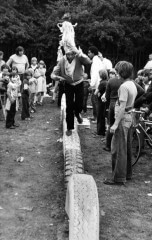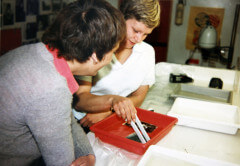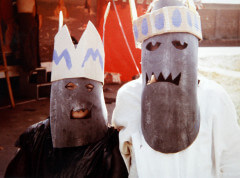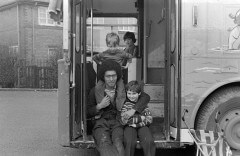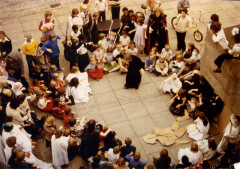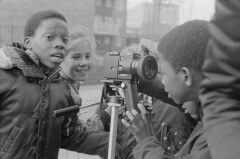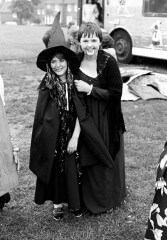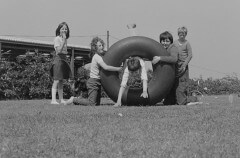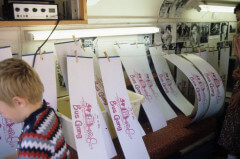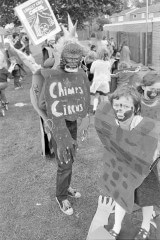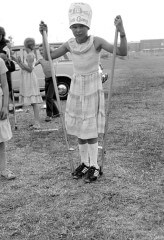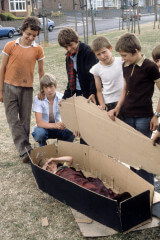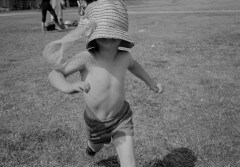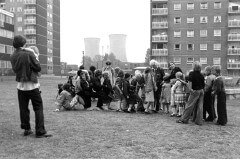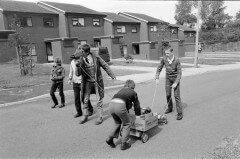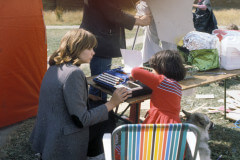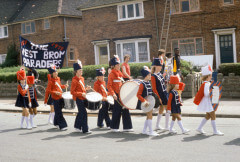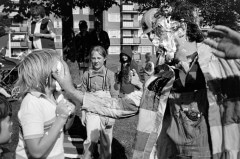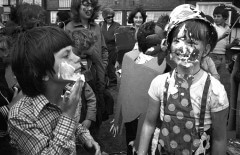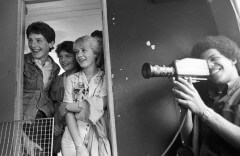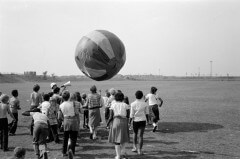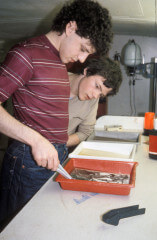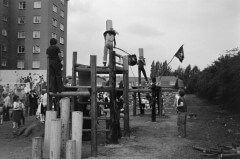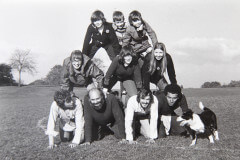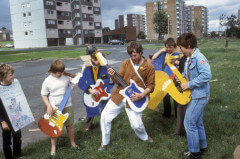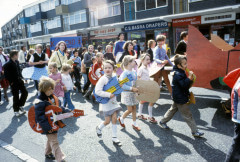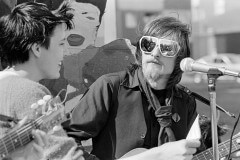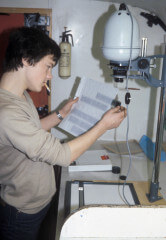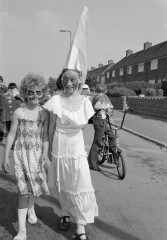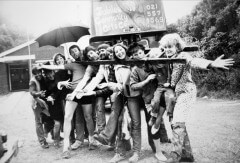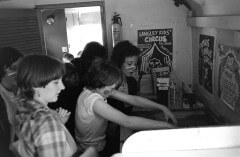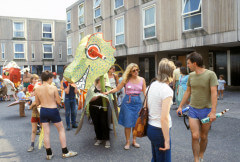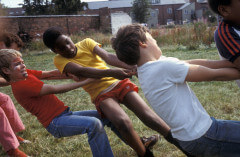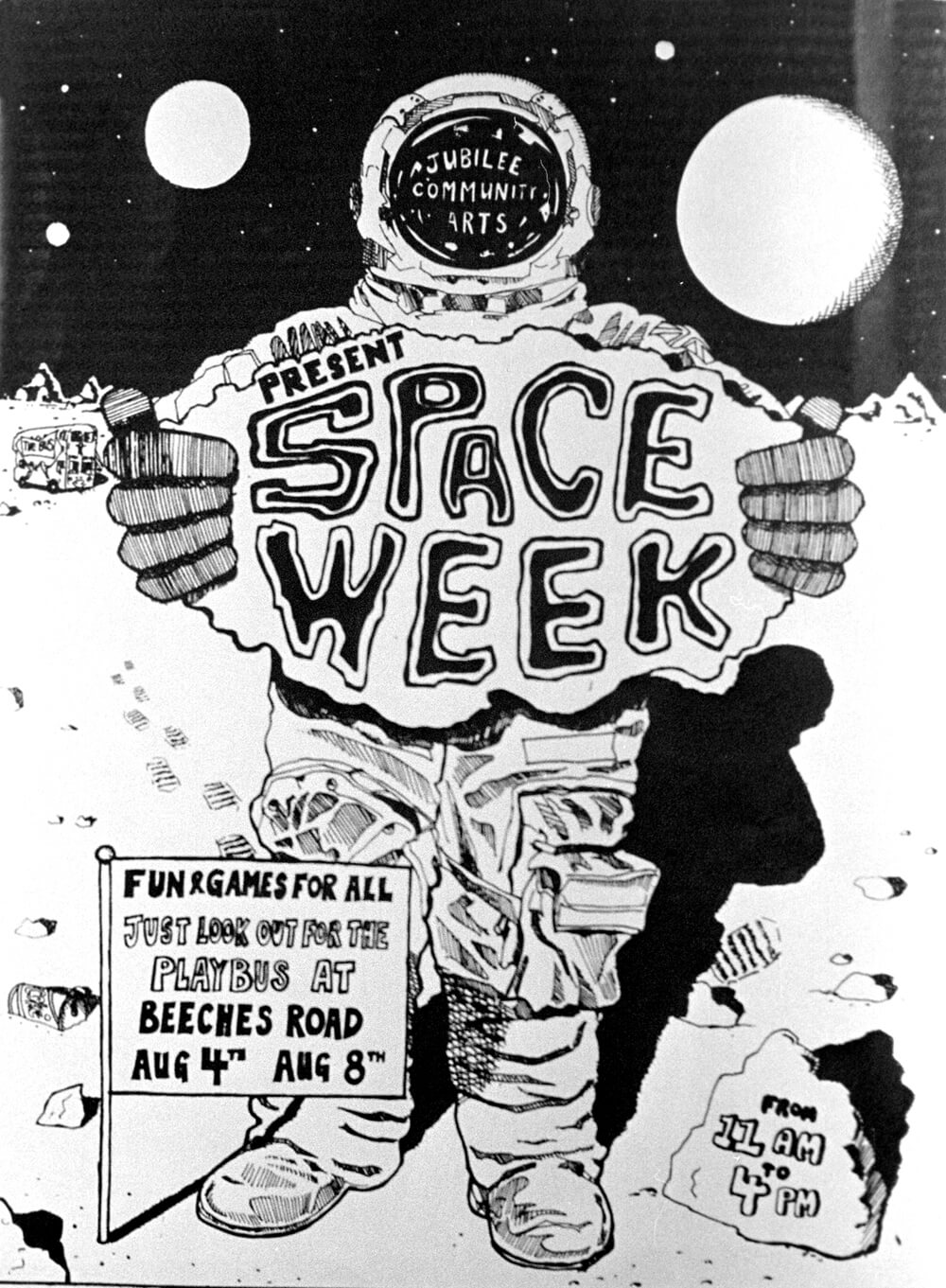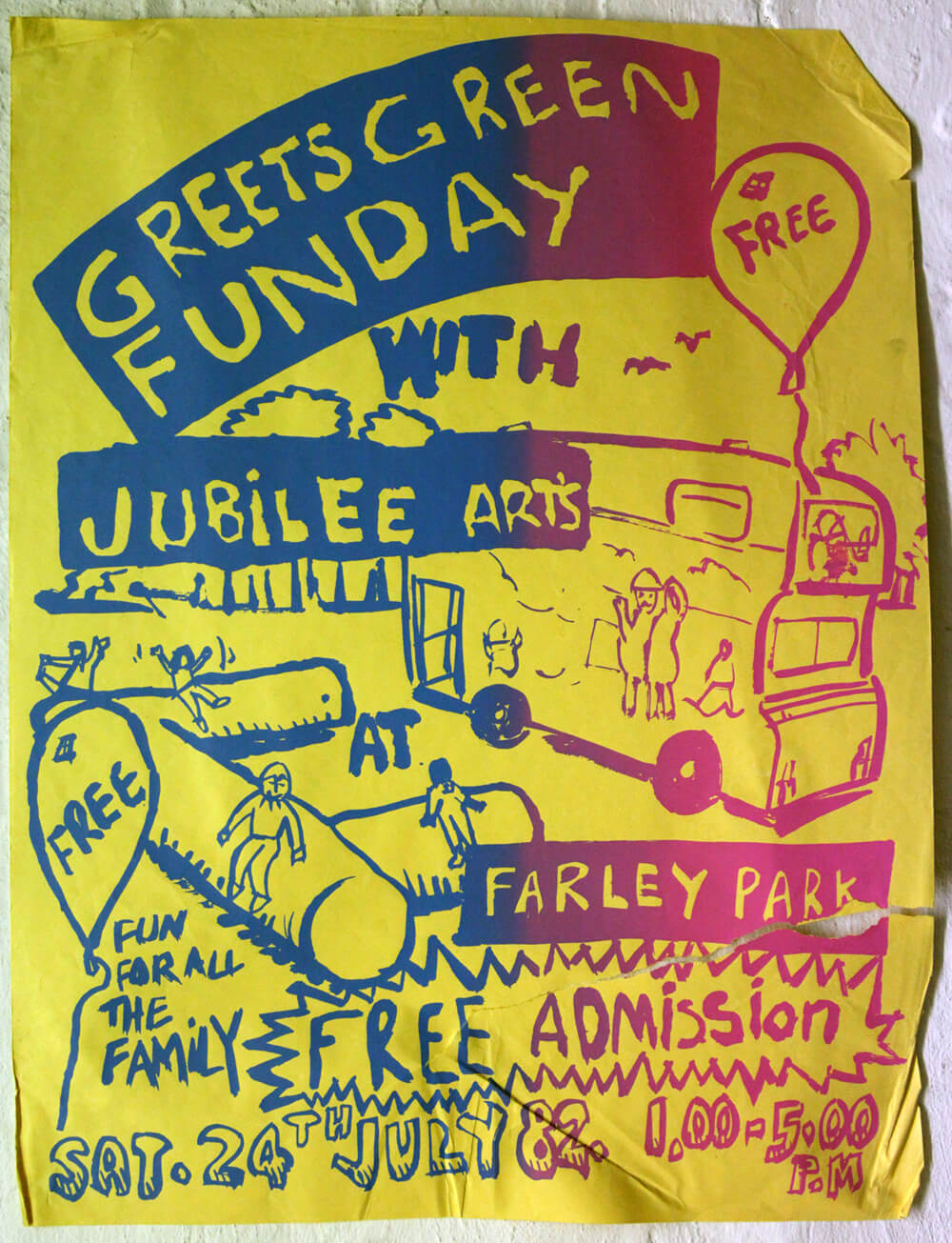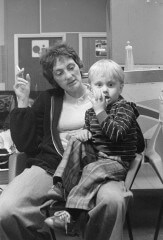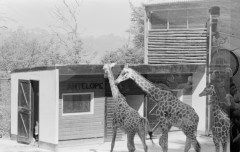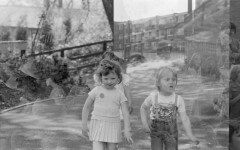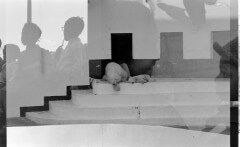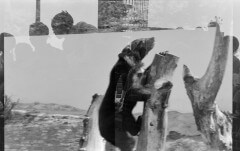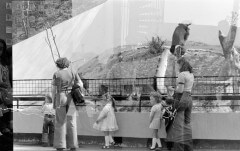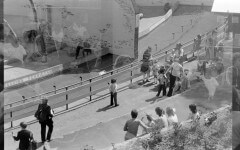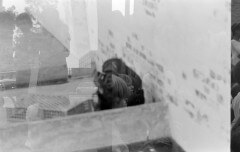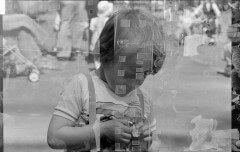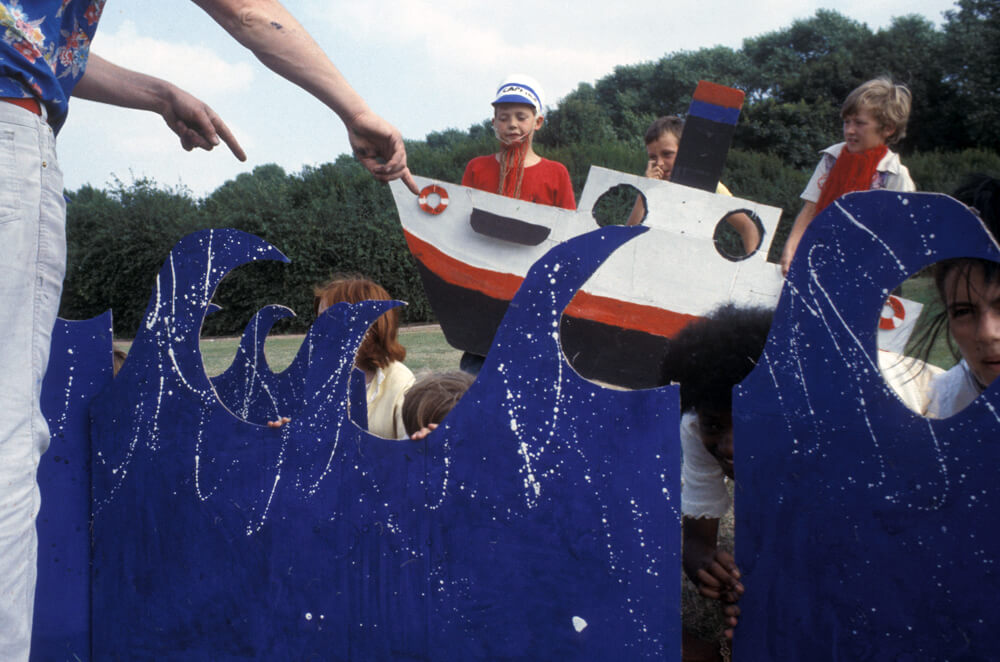After several months of planning and lobbying, in 1978 Jubilee made a successful application to the Urban Aid programme (run by the Department of the Environment) for a mobile play/resource unit. The local Members of Parliament had been particularly supportive, Peter Archer even writing a letter saying he ‘could not wait to ring that bell!’ The grant allowed Jubilee to purchase and convert a double-decker bus and establish two new full time posts for ‘The Bus Project’.
The aims:
To provide a mobile play, recreational and youth service to areas and estates in Sandwell where such facilities are at the moment deficient or non-existent.
To co-ordinate play projects and recreational activities involving the transference of creative and organisational skills to local residents, playleaders and young people.
To support with resources and personnel the self-help activities of community groups seeking to extend play and recreational provision in their immediate area.
To co-ordinate closely with statutory and voluntary agencies and to co-ordinate access to available resources, equipment and grant-raising sources.
‘The Bus was purchased from Macualey Mann who had converted it for use at Trade Fairs. The basic conversion was very apt for the purposes of our project – 240 volt electricity system with a 12 volt supply on top deck, hot and cold running water, well designed work surfaces and storage space, a simple kitchen area and a large canopy.
As the engine, brakes and steering required a lot of attention, the remaining conversion work was done as cheaply as possible, but it took a great deal longer than anticipated…’
– Jubilee Annual Report, 1978-79
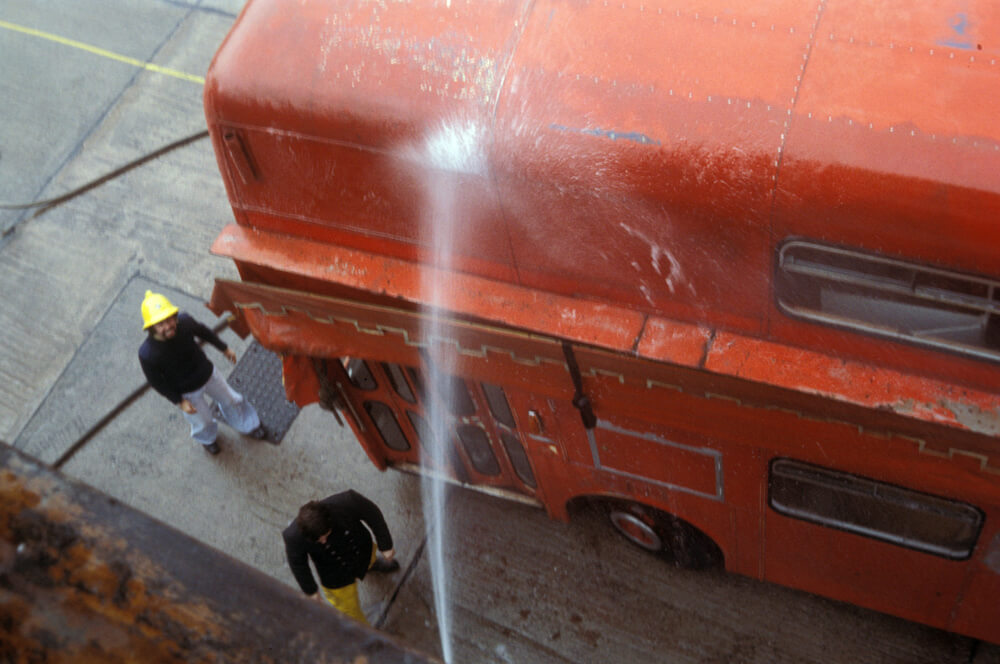
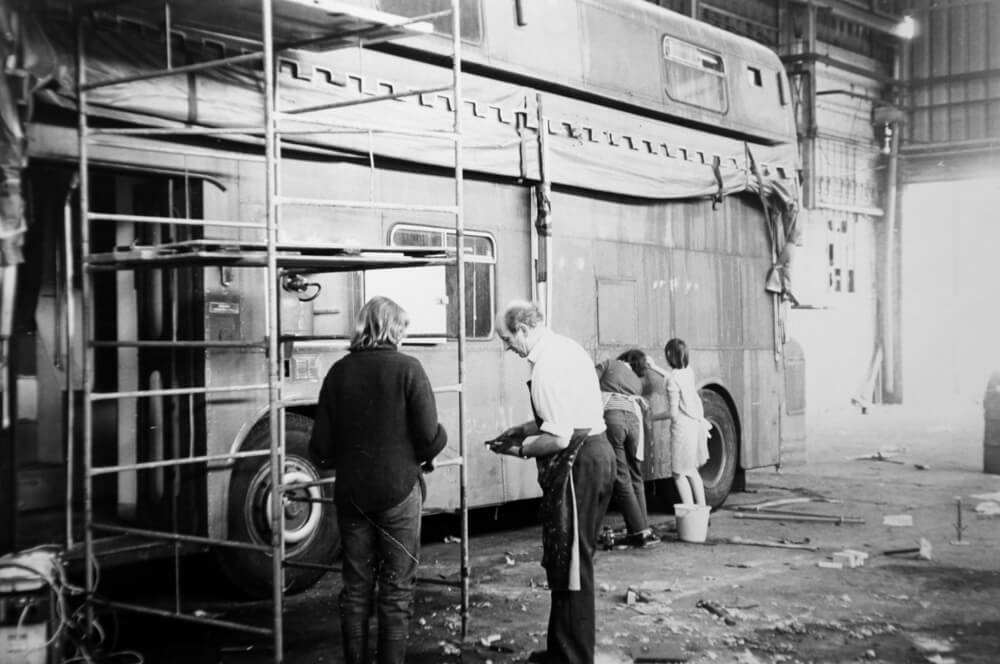
Kate Organ and Malcom Ratledge were appointed at the Bus workers – both had been involved with theatre and playscheme work previously. The bus was eventually housed in the Oak Lane Bus garage, West Bromwich, but during conversion they had used of a disused factory, Metal Sections in Tividale.
Even local firemen came along to help hose it down ready for repainting. In January Malcom left to be replaced by print-maker and photographer Peter Emina. At the time the company said, ‘Credit must go to Malcom for all the organisational work and hard graft that befell him during the arduous painting process.’ The design work and painting was undertaken by Mark Renn, an environmental artist who was working with Jubilee on mural projects. Stan Trow – who’d retired in ’72 as Foreman after spending 45 yrs in the Paint Shop of West Brom Bus Garage – ‘oversaw’ the whole thing, often heard saying “Yo’ve gorra rub it dahn”. The bus had a black and white darkroom and silkscreen printing facilities installed on the lower deck. The upper deck provided a meeting and exhibition space.
When the Bus Project was being planned, great stress was put on the first year as being experimental. There were a few lessons they learned, the hard way.
DON’T paint a bus in a disused factory during November and December.
DON’T try and drive a bus across grass at Yew Tree after a week’s continuous rainfall.
DON’T let the portapotti get so full that it overflows.
The original bus clocked up over 50,000 miles in the Black Country. The company went on to wear out 3 double decker buses in subsequent years, a much valued resource while there were a lack of community spaces and venues.
At Easter 1979, the Bus had its first taste of playscheme work at Yew Tree and Tipton. These early projects included simple photography, comic book making and printing. Washing the Bus ready for its visit to the Recreation and Amenities Committee meeting proved a particularly popular activity at Yew Tree. Charlemont Farm Tenants and Residents Association designed and printed posters to advertise their Kids Carnival; Wednesbury Mothers Group and Friar Park Festival Committee also made good use of the print facilities for leaflets, posters and tee-shirts. (Here the top of the Bus doubled as a crèche.) The Bus appeared at local carnivals, where at Tipton it proved invaluable as a facility for drying off wet and shivering entrants to the Fancy Dress competition. (The Bus also got jammed in the gates of Jubilee Park that day.) At Friar Park Festival it provided an exhibition space for photos and films made with local youth, a dressing room for magician the Great Soprendo and puppeteers, a print shop for festival tee-shirts and festival HQ for announcements and lost children, as well as the providing power for inflatable and the P.A. They even planned to turn the bus into a giant pinhole camera, but they never quite got round to that.
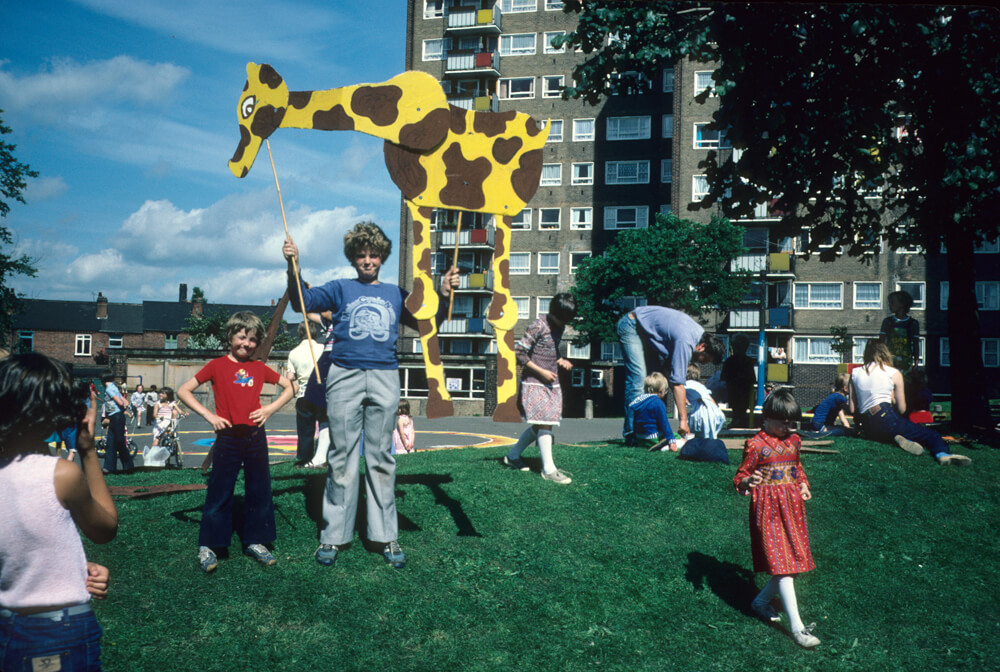
“I can’t remember how we chose themes… On some of the big playschemes, I’m pretty certain that on the first day – which was always critical, how we engaged and gathered the kids together – that by some sort of consensual system they chose the theme and then we set to and did it. Which is pretty amazing All you had was the raw materials of cardboard, paper, paint, sellotape, stanley knives and imagination and by the end of the week you’d have created some extraordinary performance involving everybody who turned up. We didn’t exclude anybody of any age.”
– Kate Organ, Bus Worker
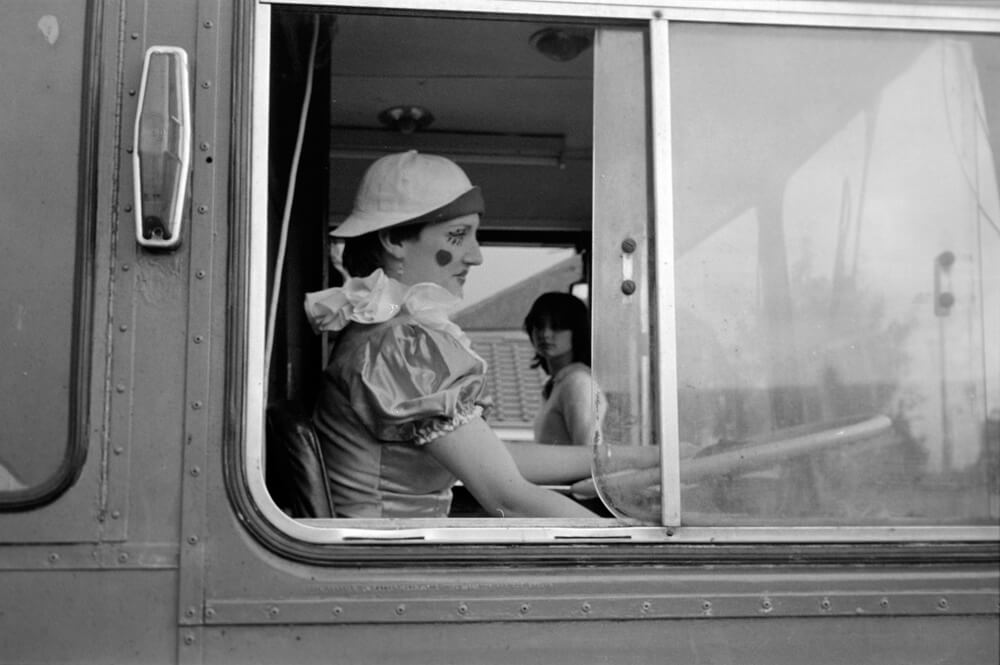
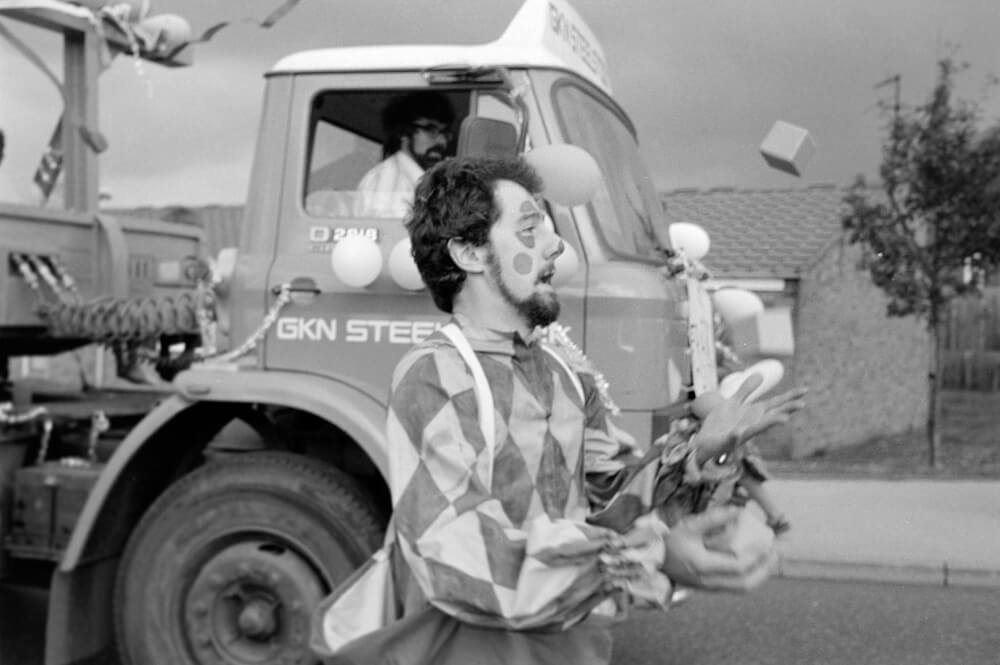
Kate Organ recalls: “The first day the bus went out anywhere, after all the painting and preparation and learning to drive it, we went to the Yew Tree at Easter. It was terrible weather. The minute we arrived there were just swarms of children from all over the estate. We overheard a girl of about 10 saying, ‘I looked out the window this morning and I said, Robert it’s true, it’s a bus, and we just ran out of the flat and I don’t know if I remembered to turn the kettle off.’ There was this incredible excitement at the sight of this brightly covered vehicle arriving on this street. Not many people on the estate owned a car so they really didn’t see anything other than a milkman.
The day ended in near disaster because we got it stuck in the mud. There should be a photo somewhere of this dangerous looking scene of all these very small children attempting to push an unladen 10 ton bus, mud coming off the back tyres, splattering everyone. Dangerous activities for children to be encouraged at all costs. Imagine today if you were found doing such a thing?”
In 1983 the Bus was on its way to an MOT test, being driven by garage engineers, when it exploded into flames at Walsall near the M6, due to an electrical fault. No-one was hurt, but the bus was a write off, leading the group to cancel summer festival appearances and a local history travelling exhibition. A second bus was sourced with local support and soon the project was back on the road in time for the 1984 Sandwell May Day Fireshow.
Super 8mm footage of play festivals with Jubilee Arts at Smethwick, Langley and Yew Tree estate, 1980, with interview with Kate Organ, Bus Worker.
Super 8mm footage of the Jubilee Bus at Tiverton road, Smethwick and Oval Road, Tipton, 1980.
Standard 8mm Film footage from 1979, circus themed play events at Windmill Lane, Smethwick, Alfred Gunn House, Langley, and Yew Tree Estate.
Using the Bus as a meeting space for a Moms and Toddlers group in Friar Park produced an illustrated booklet reader about their visit to the zoo.
Kate Organ: “I remember that being an interesting dynamic that suddenly all these women with babies and toddlers were coming on this bus and Peter was the only bloke and he had to put up with a lot of women bantering and being extremely suggestive and teasing and provoking. He did it all with great good heart. He was quite a shy man. I don’t think he was shy after his time at Wood Green. They didn’t half rib him. And the way we were always wearing these boiler suits, that’s funny isn’t it.”
We found in the archive one of the 35mm films which had been put through the camera twice by accident. At the time, this was considered a bit of a disaster – they couldn’t use the photographs for the project, but looking at them afresh we like the images, and their random juxtapositions. Judge for yourselves their happenstance artistic quality
Sony reel-to-reel black black & white footage from Friar Park Festival, 1978.
Sony reel-to-reel black black & white footage from International Festival in Smethwick, organised with Home-School Links, 1979.
